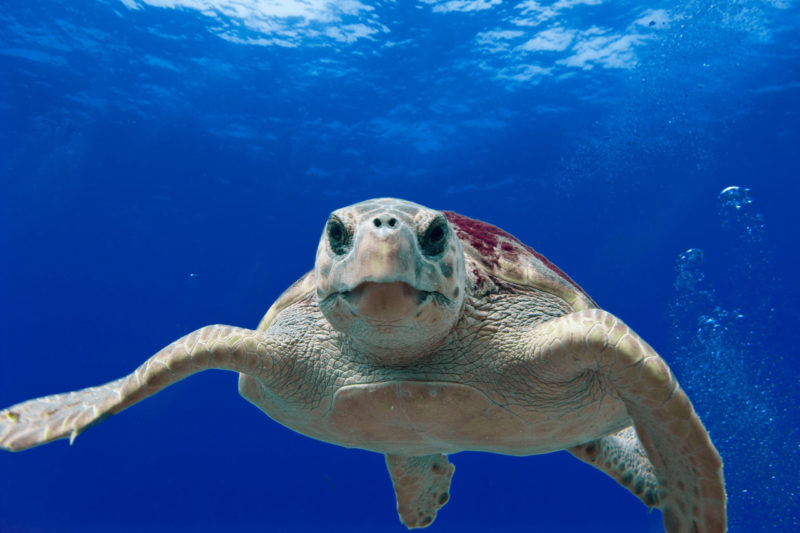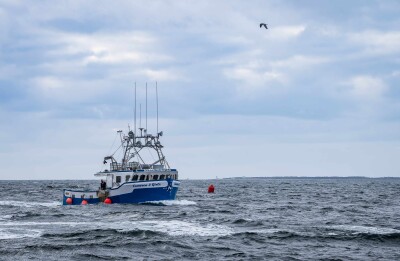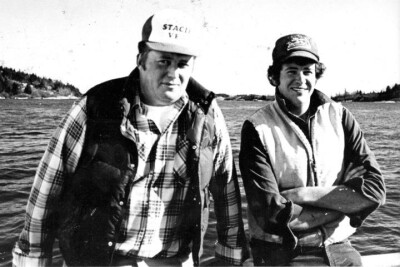NMFS funding $2.2 million for bycatch reduction projects. Federal officials announced $2.2 million in funding is being awarded to partners around the U.S. to support innovative research through the NMFS Bycatch Reduction Engineering Program.
Incidental bycatch of non-target fish, protected marine mammals and sea turtles “can have significant biological, economic, and social impacts,” NMFS said in announcing the awards.
“Preventing and reducing bycatch is a shared goal of fisheries managers, the fishing industry, and the environmental community. Working side-by-side with fishermen on their boats we've developed solutions to some of the top bycatch challenges facing our nation's fisheries.”
At the top of this year’s list are projects to develop so-called ropeless gear for the Northeast lobster and other fixed-gear fisheries, to reduce entanglement incidents with the highly endangered North Atlantic right whale population, recently estimated to number less than 400 animals.
The selected projects include:
Northeast
LobsterLift, LLC, $185,590 for development of an Interoperable Ropeless System in collaboration with fishermen. The LobsterLift team will work with fishermen and fishery management personnel to create a system that provides both parties with a viable solution to reduce whale entanglements and enable the trap fishing industry to continue.
Researchers will develop a ropeless, remotely deployed lobster trap retrieval system that is interoperable with other acoustic communications systems, and will work with lobster fishermen to test the system in close proximity to one another, using electronic gear marking and different acoustic systems to ensure interoperability.
Sea Mammal Education Learning Technology Society, $246,458 for advancing ropeless/on-demand fishing technology in the Gulf of Maine. In this continuation of research from 2020, researchers will continue fishing with lift bag ropeless gear with lobster and gillnet fishermen in the Gulf of Maine.
Delaware State University, $233,676 for Bbycatch reduction of modified large mesh sink-gillnets in the Atlantic monkfish fishery. In this project, researchers will examine the effects of modifications to sink-gillnets on the bycatch of Endangered Species Act-listed Atlantic sturgeon. They will compare the target catch and Atlantic sturgeon bycatch rates under two net configurations over a geographic range from Massachusetts to Virginia.
New England Aquarium Corporation, $191,897 for quantifying porbeagle shark post-release mortality and bycatch susceptibility in the Northeast U.S. bottom trawl fishery. In this study, researchers will evaluate post-release mortality in porbeagle shark captured in the bottom trawl fishery.
They will train fishermen on tagging and data collection techniques so that when they capture sharks during regularly permitted trips, they can collect vitality data and deploy satellite tags to determine post-release animal fate and movement.
The New England Aquarium is also getting $208,234 for innovative technology to understand the impacts of fisheries gear entanglement on endangered leatherback sea turtles. This project will quantify the post-release mortality rate for disentangled leatherbacks and compare post-release behavior with natural behavior of uncompromised turtles.
By taking blood samples from entangled turtles and fitting them with tags, researchers will measure the physiological health of turtles immediately after disentanglement and monitor their post-release mortality and behavior over the short and long term after they are released.
Southeast
Mote Marine Laboratory, $188,995 for addressing impacts of hook size modifications on catch and bycatch rates in the Gulf of Mexico Bottom Longline (BLL) Reef Fish Fishery. The project will identify the impact of hook size on target species catch in the Gulf of Mexico BLL reef fish fishery. If these expected impacts are confirmed, subsequent outreach efforts will promote gear modifications throughout the Gulf of Mexico BLL fishery.
West Coast
Pacific States Marine Fisheries Commission, $157,897 for testing modified circle hooks to reduce yelloweye rockfish bycatch in the West Coast directed Pacific halibut longline fishery. High levels of yelloweye rockfish bycatch could result in management measures that would limit fishery participants’ access to halibut, and could hinder the stock’s rebuilding status.
This project will modify the hooks on which Pacific halibut are caught to see whether modified hooks can decrease the catch of yelloweye rockfish while still being equally as effective in catching halibut.
The commission was also awarded $245,797 to examine artificial illumination of trawl gear components to reduce Pacific halibut bycatch in West Coast and Alaska bottom trawl fisheries. This study tests whether adding lights to fishing gear can help Pacific halibut avoid capture in bottom trawl fisheries that target other species.
Alaska
International Pacific Halibut Commission, $99,700 for gear-based approaches to catch protection as a means for minimizing whale depredation in longline fisheries. When whales find and eat hooked fish it results in revenue loss for fishermen and puts whales at risk of injury or entanglement in fishing gear.
This study draws on the collective expertise of fishery participants and scientists to identify methods of preventing depredation in Alaska longline fisheries, and then tests the most promising methods in the field.
Pacific Islands
International Seafood Sustainability Foundation, Inc., $168,962 for testing the use of biodegradable fish aggregating devices (bio-FADs) in the Pacific Ocean. Impacts caused by lost and abandoned drifting fish aggregating devices (dFADs) are ghost-fishing, accumulation of plastic at sea, damage to coral reefs, and interference with other economic activities, such as tourism.
This project will design and test innovative bio-FAD structures that eliminate the use of netting; degrade as fast as possible once their useful lifetime for fishing ends; and replace most of the plastic with organic biodegradable materials, particularly in the Western Pacific Ocean.
Eric Gilman, LLC, $53,200 for a Bayesian synthesis of at-vessel mortality rates of elasmobranchs taken in pelagic longline fisheries to support evidence-based bycatch mitigation policy. This study uses existing mortality data of sharks and rays to understand factors that influence surviving capture in pelagic longline fisheries—such as those that target tuna—in the western Pacific Ocean.
Pfleger Institute of Environmental Research, $188,416 for reducing longline bycatch using artificial baits off the Hawaiian Islands. This project will investigate whether newly developed artificial baits can reduce bycatch of protected species, including oceanic whitetip sharks, while maintaining target catch rates of tuna, swordfish, and other marketable species. Researchers will test an artificial bait that relies on target species’ vision, rather than their sense of smell, making the bait more species-selective than other artificial baits that have been tested.
Target catch and bycatch rates for natural and artificial baits will be compared in side-by-side at-sea trials aboard a commercial fishing vessel off the Hawaiian Islands.







